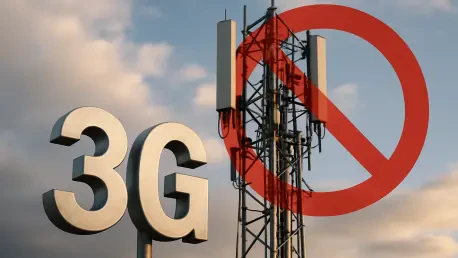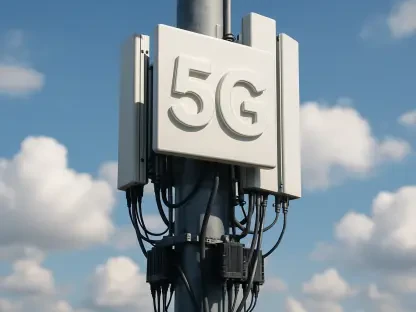As Canada advances in its journey toward harnessing the power of contemporary communication technologies, a significant shift is unfolding in the telecommunications landscape. An imminent transition awaits, marked by the decommissioning of 3G networks, which is set to redefine how Canadians connect in the digital age. This evolution, driven by the nation’s leading telecom companies, aims to usher customers into an era dominated by next-generation networks, promising enhanced speed, capacity, and reliability. The movement toward 4G and 5G networks is not isolated to Canada—similar transitions are occurring worldwide, notably in the United States. As such, understanding the dynamics and implications of this shift becomes crucial for consumers and industry stakeholders alike.
Telecom Leadership and Network Evolution
Strategic Approaches of Major Providers
Canada’s telecom giants Bell, Telus, Rogers, and Freedom Mobile are spearheading this transformative endeavor with strategic plans to phase out 3G services. Bell has outlined a meticulous approach, beginning with Manitoba, where 3G services will cease at the end of the current year. Bell emphasizes the importance of upgrading to devices compatible with VoLTE (Voice over LTE), forewarning customers of disruptions that might affect emergency services access for non-compliant devices. Despite LTE capability in older devices, compatibility issues remain, posing challenges for some users. Notably, past complications have arisen with OnePlus devices on Rogers’ network, suggesting a potential range of hurdles ahead.
Telus parallels Bell’s approach with a phased network shutdown, initially targeting rural Manitoba, culminating in the termination of 3G support in Winnipeg and Brandon by March of the following year. Telus endeavors to simplify the transition for its users by providing resources to ensure device compatibility. Assuring that devices sold post-2018 support VoLTE, Telus aims for a smooth migration for the majority of its customer base. These efforts showcase the proactive measures adopted by telecom providers, striving to minimize disruption while embracing modern network capabilities.
Financial and Consumer Impact
Transitioning away from 3G technology brings financial considerations to light, particularly for consumers holding older, incompatible devices. Bell and Rogers have introduced a nominal $3 monthly fee for customers who are temporarily bound to 3G due to device limitations, nudging users toward modernization. The fee reflects a broader initiative within the telecom industry to streamline technological alignment between users and emerging network standards. This financial element underscores the dual facets of the transition—while it facilitates enhanced connectivity, it requires consumer action to bridge current technologies with future capabilities.
Telecommunications authorities, including the CRTC (Canadian Radio-television and Telecommunications Commission), are actively voicing support for this shift. The CRTC highlights the move as a critical step toward fostering comprehensive network infrastructures, capable of meeting modern digital demands and consumer expectations. Through informative resources like fact sheets on the 3G shutdown, the CRTC plays a pivotal role in equipping both the industry and consumers with the knowledge required to navigate this technical evolution effectively.
Preparing for the Future of Connectivity
Consumer Readiness and Awareness
Proactive preparation emerges as a central theme in this shift, underscoring the need for heightened consumer awareness concerning device compatibility with VoLTE and advanced networks. Telecom providers stress the importance of customers verifying their devices to avert potential service disruptions, thereby engaging an informed consumer base. This emphasis reflects a broader industry trend, nudging both telecom companies and consumers toward embracing cutting-edge communications technology seamlessly. The narrative that emerges is one of readiness and adaptation, where stakeholders recognize the necessity of aligning with progressive network developments.
The transition away from 3G networks is presented as a crucial evolutionary step in the telecommunications sector, driven by global trends and technological advancements. It highlights a nuanced balance between embracing innovation and addressing the challenges presented by older devices. This duality is mirrored across various industry narratives, offering a holistic view of the multifaceted implications that accompany the cessation of 3G services. Ultimately, the endeavor is about enhancing network capabilities to meet the ever-growing demand for data and connectivity in an increasingly digital world.
Industry’s Forward-Thinking Perspective
Telecom operators intensify their focus on modernizing network infrastructures by phasing out outdated technologies, echoing priorities set by global and national telecommunications bodies. This move represents not only an upgrade in technology but also a strategic alignment with cutting-edge digital trends that serve current and future needs. Through engagements with regulatory support, logistics planning, and consumer considerations, companies are paving the way for this vital shift in connectivity. A recurring narrative is the importance of synchronized efforts by both providers and users to anticipate and adapt to this technological shift smoothly.
As part of this ongoing discourse, the industry’s thoughtful approach encapsulates regulatory backing, complex challenges, and proactive consumer strategies. The transition illustrates the balance sought between innovation enhancement and cautious deliberation of device compatibility and associated services. The nuanced implications are widespread, influencing diverse aspects of the telecommunications landscape. The narrative reflects a coherent integration of industry perspectives and logistics planning, underpinning the technological shift with clarity and coherence.
The Path Forward in Telecommunications
As Canada progresses in its quest to leverage modern communication technologies, a noteworthy change is taking place within the telecommunications sector. The anticipated phase-out of 3G networks signals a pivotal transformation in the way Canadians access digital connectivity. This shift, spearheaded by Canada’s major telecom providers, is intended to usher consumers into a new era characterized by next-generation networks, including 4G and 5G, which promise improved speed, greater capacity, and increased reliability. This transition is part of a global trend, with similar developments occurring in the United States and other countries. It is essential for both consumers and industry stakeholders to grasp the dynamics and implications of this evolution, as it impacts everything from personal communication to business operations. As next-gen networks take center stage, they bring not just technological advancements but also new opportunities and challenges that must be navigated in this rapidly changing digital landscape.









